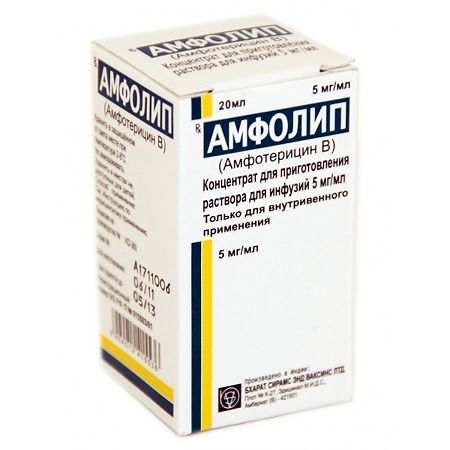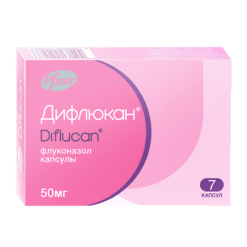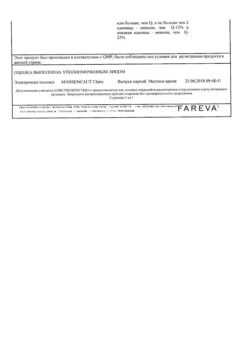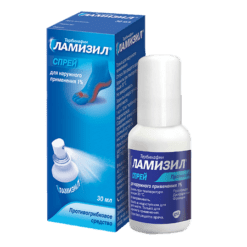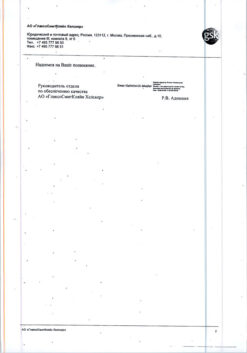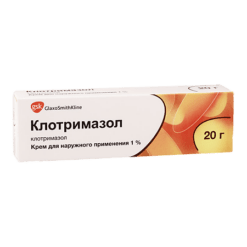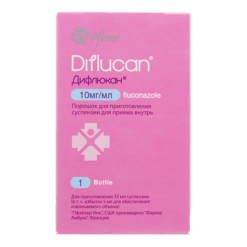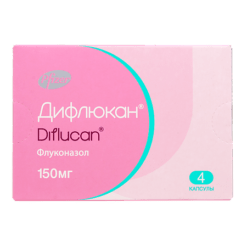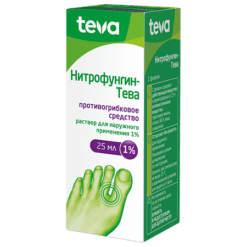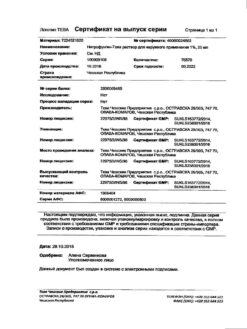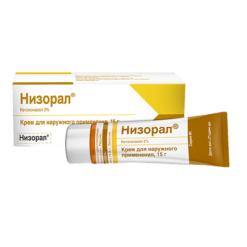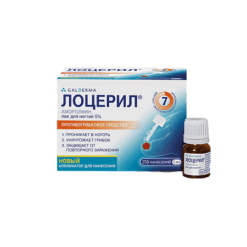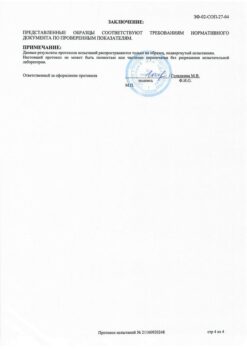No products in the cart.
Ampholip, 5 mg/ml fl. 20 ml
€1.00
Out of stock
(E-mail when Stock is available)
Description
Amfolip has a fungicidal and/or fungistatic effect depending on the concentration in the biological fluids and the sensitivity of the pathogen. The mechanism of action of amphotericin B is based on its ability to bind to sterols (ergosterols) located in the cell membrane of the fungus sensitive to amphotericin B. As a result, membrane permeability is violated and intracellular components enter the extracellular space.
It is active in vitro against most strains of Histoplasma capsulatum, Coccidioides immitis, Candida spp., Blastomyces dermatitidis, Rhodotorula, Cryptococcus neoformans, Sporothrix schenkii, Mucor mucedo, Aspergillus spp.
Distributed in most body organs and tissues, detected in the cerebrospinal fluid in insignificant amounts. Binding with plasma proteins is 90%. It is excreted by the kidneys, very slowly. 2-5% of the administered dose is excreted in the active form. May be detected in the urine for 7 weeks after withdrawal of the drug.
Indications
Indications
Composition
Composition
1 ml of concentrate for preparing solution for infusion contains:
active ingredient: amphotericin B lipid complex (in terms of amphotericin B) 5 mg
excipients: dimiristol phosphatidylcholine, dimiristol phosphatidylglycerol, sodium chloride, water for injection
How to take, the dosage
How to take, the dosage
Intravenously, dropwise for 30-60 min. If adverse reactions occur, the infusion time should be increased to 90-120 min. The recommended concentration of active substance is 1 mg/ml. The average course dose of the drug is 1-3 g and is achieved over 2-4 weeks.
In systemic mycoses, treatment usually begins with a dose of 1 mg/kg/day, which is gradually increased to 3 mg/kg/day, in some cases up to 5 mg/kg/day.
For prevention of invasive fungal diseases in parenchymal organ transplants, Amfolip is prescribed for 5 days after transplantation at a dose of 1 mg/kg/day.
In patients with HIV infection complicated by disseminated cryptococcosis, the drug is prescribed at a daily dose of 3 mg/kg for 42 days. After completion of the main course due to the risk of recurrence of infection a longer maintenance therapy may be necessary.
In the treatment of visceral leishmaniasis, Ampholip is used at a dose of 1-1.5 mg/kg/day for 21 days or 3 mg/kg/day for 10 days. In immunodeficient patients, a dose of 1-1.5 mg/kg/day for 21 days may also be used, but maintenance therapy or repeated courses of treatment may be necessary after the main course ends because of the risk of recurrence of infection.
For prevention of invasive fungal infections in patients with chemotherapy- or high-dose GCS-induced neutropenia, the drug is indicated at a dose of 2 mg/kg/day until neutrophil levels return to 0.5-109/l.
In children the drug is prescribed in doses comparable to those used in adults, at a rate of 1 kg of body weight.
When the drug is prescribed to elderly patients no dose adjustment is required.
How the infusion solution is prepared
The drug should be kept at room temperature for 1-2 hours immediately before use.
To obtain the infusion solution, the bottle should be shaken thoroughly – until sediment disappears – and added to 5% dextrose solution for intravenous use. Ready to use infusion solution should have a concentration of 1mg/ml.
Interaction
Interaction
Increases the effectiveness and toxicity of anticoagulants, nitrofurans; theophylline and sulfonylureas (prolongs the elimination half-life); reduces the effectiveness of ethinylestradiol (risk of breakthrough bleeding).
Inhibitors of microsomal oxidation in the liver (including cimetidine, non-narcotic analgesics, antidepressants) slow the rate of metabolism, increase serum concentrations (increased toxicity). Inducers of microsomal oxidation in the liver (including phenytoin, rifampicin, barbiturates, carbamazepine) accelerate biotransformation in the liver (decreased effectiveness).
When concomitant use of Amfolip with flucytosine, it should be considered that Amfolip may increase the toxic effects of flucytosine by increasing cellular uptake and decreasing renal excretion.
Pharmaceutical interactions
Amfolip is incompatible with heparin, physiological and other solutions containing electrolytes. The drug must not be mixed with other medicinal products. The presence of bacteriostatic additives (including benzyl alcohol) may lead to precipitation of the drug.
Special Instructions
Special Instructions
The likelihood of toxic effects increases with prolonged treatment with the drug Amfolip.
When using the drug, regular (at least once a week) laboratory monitoring of kidney, liver and hematopoietic function is necessary. Special caution should be exercised when prescribing Amfolip in patients concomitantly receiving nephrotoxic drugs.
When prescribing the drug to patients with diabetes mellitus it should be noted that 1 bottle of Amfolip contains about 900 mg of sucrose.
Injection of Amfolip into patients on hemodialysis is possible only after completion of the dialysis procedure.
Patients taking potassium preparations should have their plasma potassium and magnesium levels carefully monitored when prescribing Amfolip.
Back pain, which occasionally occurs with IV infusion, subsides after stopping the infusion or reducing the infusion rate and usually does not reoccur.
While no significant changes to the clotting system have been observed during treatment with Amfolip, it should be noted that hemolysis may occur when using Amfolip in its usual dosage form.
When using IV systems previously established for other purposes, the system should be flushed with 5% glucose solution for injection. If this is not possible, Ampholip should be administered through a separate system.
Contraindications
Contraindications
Side effects
Side effects
Gastrointestinal and hepatic disorders: nausea, vomiting (less than 3%); increased liver enzymes activity. As a rule, liver function abnormalities do not progress with increasing the drug dose. In patients after liver transplantation a significant increase in alkaline phosphatase levels is possible.
Urinary system disorders: there are reports of transient decrease of renal function, including increased serum creatinine concentration, azotemia, hypokalemia, acidosis.
Others: rarely – fever, chills, headaches. There are reports of back and chest pain, rarely severe. A characteristic symptom is the occurrence of lower back pain a few minutes after the start of infusion.
Overdose
Overdose
Treatment: in case of overdose, the drug should be stopped immediately and renal function should be monitored carefully.
Additional information
| Shelf life | 2 years. |
|---|---|
| Conditions of storage | In the dark place at 2-8 °C (do not freeze). |
| Manufacturer | Bharat Sirams & Waxins Limited, India |
| Medication form | solution for infusion |
| Brand | Bharat Sirams & Waxins Limited |
Related products
Buy Ampholip, 5 mg/ml fl. 20 ml with delivery to USA, UK, Europe and over 120 other countries.

